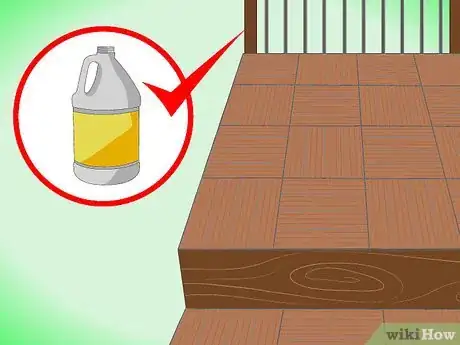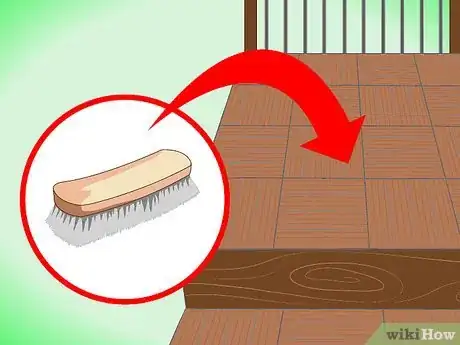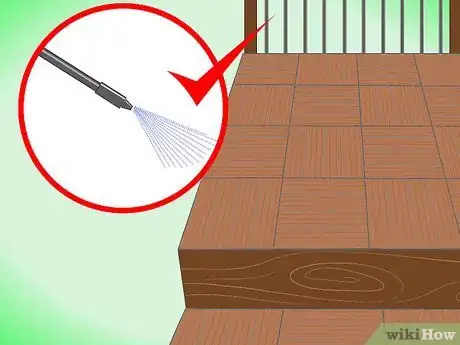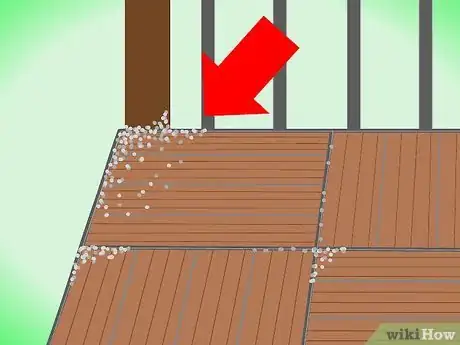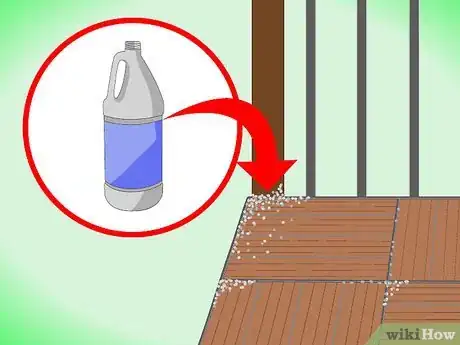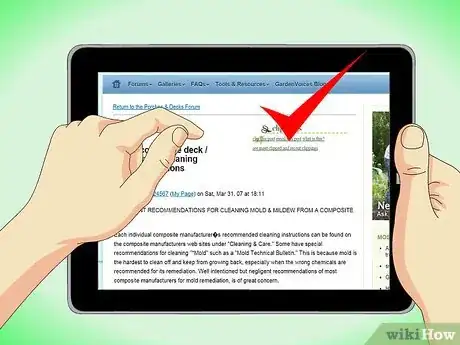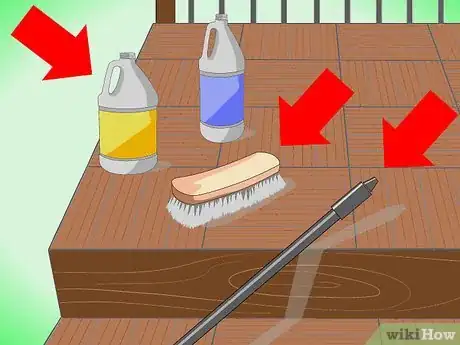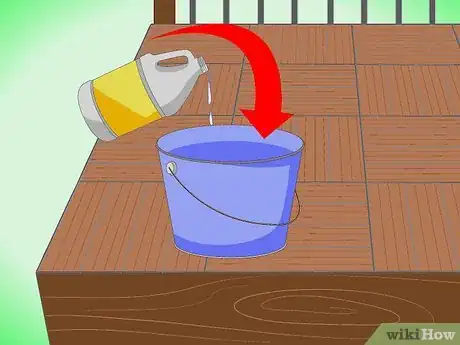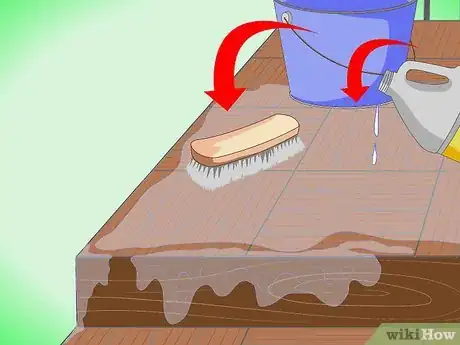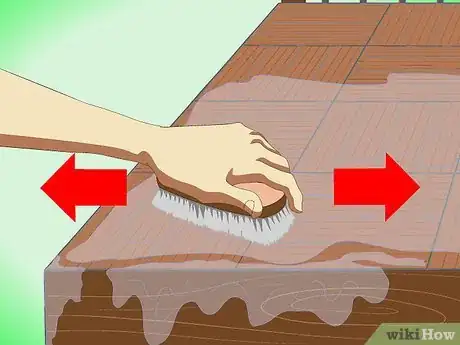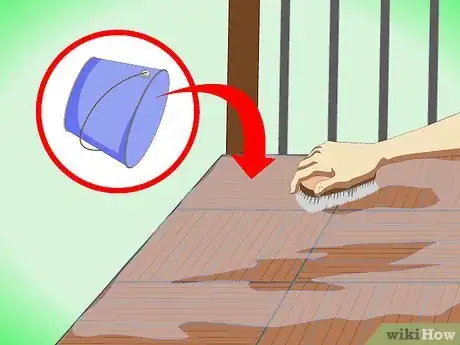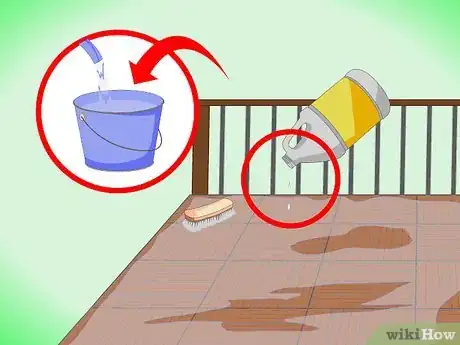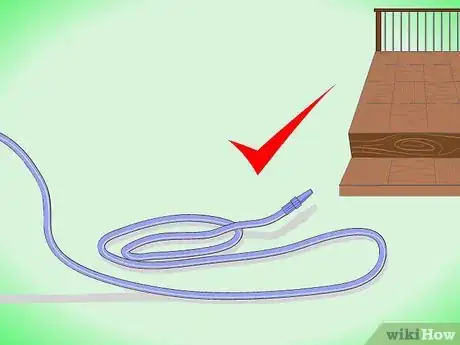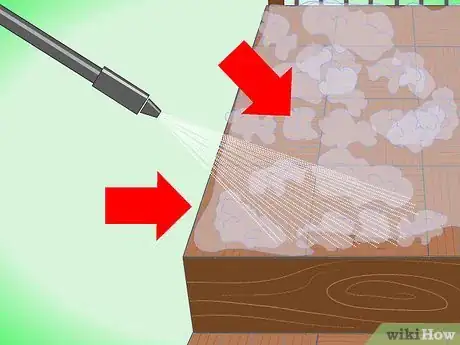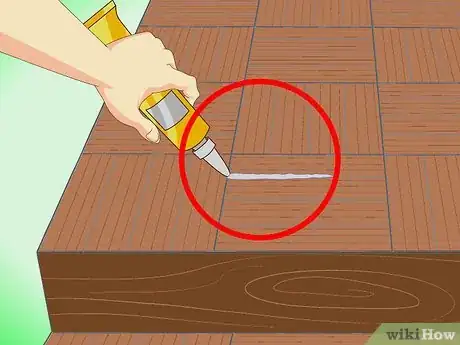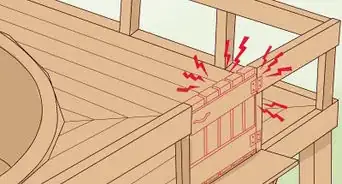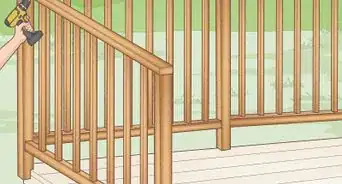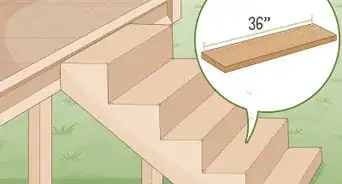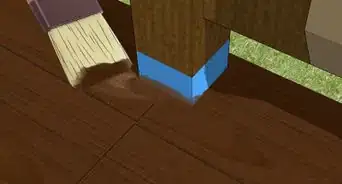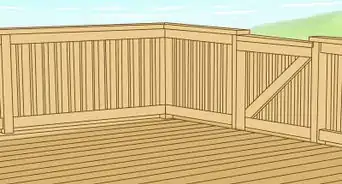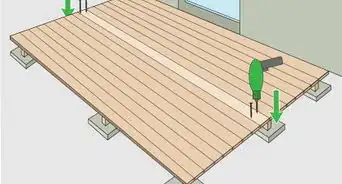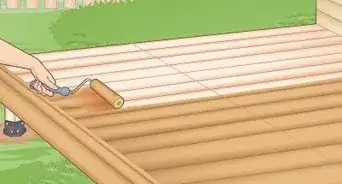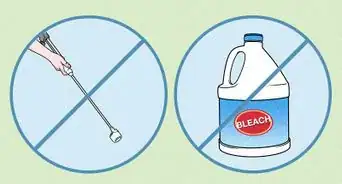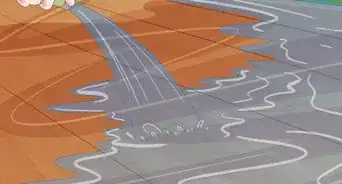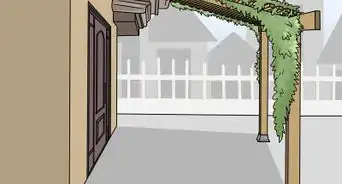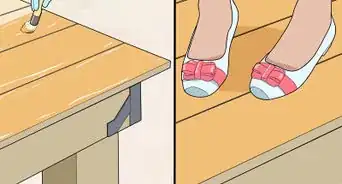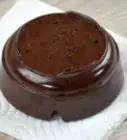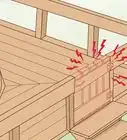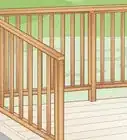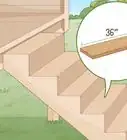X
wikiHow is a “wiki,” similar to Wikipedia, which means that many of our articles are co-written by multiple authors. To create this article, volunteer authors worked to edit and improve it over time.
This article has been viewed 55,698 times.
Learn more...
Plastic decking can be scratched and will degrade with the use of bleach.[1] With this in mind, you must choose your tools carefully when cleaning your plastic decking.
Steps
-
1Although not all plastics are damaged by chlorine bleach, if you are not certain, then choose a cleaner that does not contain chlorine bleach. You may use white vinegar, apple-cider vinegar, ammonia, soap, or any of thousands of name brand variations of these.
-
2If you choose to scrub the deck clean, choose a deck brush with natural or plastic bristles. Do not use a wire brush as that will thoroughly scratch your plastic decking. Scratches will trap dirt, look bad, and are difficult to clean. You will also need a bucket and a supply of clean water. Deck brushes are between 8" and 12" wide and utilize a pole so you can scrub while standing. You can also remove the pole and scrub while kneeling if you so desire.Advertisement
-
3You may choose to use a pressure washer to spray the deck clean. "Pressure washing is also a good idea from time to time to remove built-up dirt and debris.[2] When using a pressure washer, do not exceed 1800psi with a 20-degree nozzle."
-
4If you are cleaning to remove mold or mildew, there may be more to consider before you begin:
-
5"Chlorine Bleach has been proven to kill bacteria, viruses and fungus but has not been proven effective in killing or removing molds on *porous surfaces such as composite decking and this fact is stated on the label directions of products like Clorox® Bleach. Most composites are porous materials because they are full of pores and permeable by water, air, etc. Some Composite manufacturers claim that the composite they manufacture is 'fully encapsulated' and therefor, their product is non-porous. If a composite absorbs moisture (humidity), however little it may be, the composite is porous.[3] You can tell if your composite is porous if it becomes heavier when water is added. You can ask any composite manufacturer; 'what their composites moisture absorption rate or *Porosity?'"
-
6
-
7Now that you are ready to begin, clear off the deck and assemble your cleaning supplies. Dry sweep any loose debris with your deck brush or any broom.
-
8Fill your bucket with the water and cleaning solution of your choice.
-
9Wet the deck at one end by dipping the deck brush into the bucket, then sprinkling the water and cleaning solution onto the deck several times.
-
10Scrub the dirty deck. Push the deck brush back and forth, exerting some downward pressure, but not so much as to compress the bristles of the brush. The tips of the bristles do most of the removal work. If you are pressing so hard that the sides of the bristles are sliding across the deck, then you are pushing down too hard and the bristles will not scrub as well.
-
11Continue to scrub and wet the deck as needed, and move on to new dirty areas until the bucket is mostly empty.
-
12Empty the remaining solution onto the deck and go fill the bucket with clean rinse water. Rinse the scrubbed area.
-
13Tip: If a water-hose is available, this could save many trips to just use the water-hose to rinse the deck. If you happen to have more than one bucket, you may have several buckets of rinse water on stand-by. Work with one bucket of cleaning solution at a time so that your scrubbed section does not dry. Scrubbing loosens the dirt, then rinsing removes it, but rinsing works best when the dirt hasn't dried back in place.
-
14If you decided to use a pressure washer, then the high pressure water stream is doing the scrubbing and rinsing in one step. Follow the safety instructions that come with the machine since streams of high pressure water can be harmful and can cause personal injury.[4] [5] See an article specific to pressure washing techniques for some good tips.
- Pressure washing may work better for getting dirt out of scratches in your plastic decking. For dirt that the deck-brush could not get, it may be necessary to use a tooth-brush. A micro-fiber cloth can also pull dirt out of fine scratches.
-
15Once your deck is clean and dry, you may wish to seal any existing scratches. You may look-up articles about sealing scratches in plastic using a heat gun, solvents, Krylon Fusion paint, etc. however that is beyond the scope of this article.
Advertisement
Community Q&A
-
QuestionMy pressure washer left lines on a composite deck. Can I get them out?
 Community AnswerIf the lines are not overlap marks able to be taken out by washing again, then take pictures and ask the manufacturer before trying too many other things out. The composite decking materials now greatly vary in some areas. If the manufacturer is unhelpful, I would consider experimenting with my heat gun after researching the specific material.
Community AnswerIf the lines are not overlap marks able to be taken out by washing again, then take pictures and ask the manufacturer before trying too many other things out. The composite decking materials now greatly vary in some areas. If the manufacturer is unhelpful, I would consider experimenting with my heat gun after researching the specific material. -
QuestionHow can I clean oil off plastic wood?
 Community AnswerThe amount and type of oil and how long its been sitting on that plastic wood will all be factors in how well this goes since many outdoor plastics are petroleum products themselves, but if the stain is relatively fresh, automatic dish washing detergent with a brush can work wonders with plastic woods. If the oil has been sitting for too long, I'd probably let a weighted poultice of light colored kaolin clay powder sit on it first for a day or so or weigh down a layer of kitty litter to draw it up as much as possible. Then I'd clean it with a brush, water, and granulated automatic dish washing detergent and then with standard/housecleaning version of the Krud Kutter product.
Community AnswerThe amount and type of oil and how long its been sitting on that plastic wood will all be factors in how well this goes since many outdoor plastics are petroleum products themselves, but if the stain is relatively fresh, automatic dish washing detergent with a brush can work wonders with plastic woods. If the oil has been sitting for too long, I'd probably let a weighted poultice of light colored kaolin clay powder sit on it first for a day or so or weigh down a layer of kitty litter to draw it up as much as possible. Then I'd clean it with a brush, water, and granulated automatic dish washing detergent and then with standard/housecleaning version of the Krud Kutter product.
Advertisement
References
- ↑ https://www.rhinohide.com/blog/never-use-bleach-on-composite
- ↑ https://www.decks.com/how-to/14/using-a-pressure-washer-to-clean-a-deck
- ↑ https://www.sciencedirect.com/topics/materials-science/porous-material
- ↑ https://www.cdc.gov/disasters/pressurewashersafety.html
- ↑ https://vortexxpressurewashers.com/pressure-washer-safety-tips/
About This Article
Advertisement
